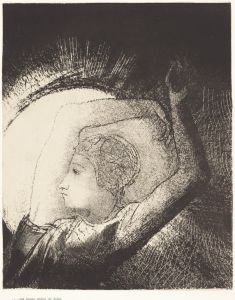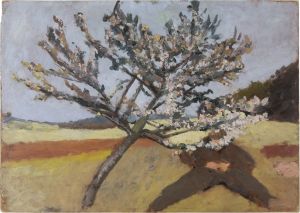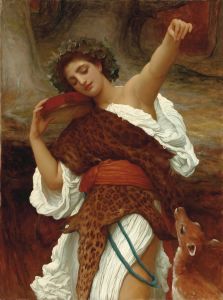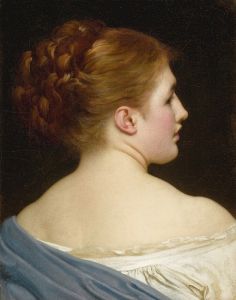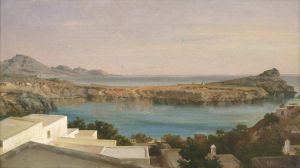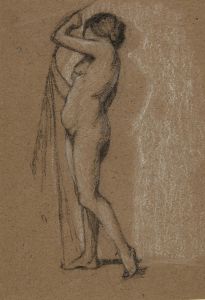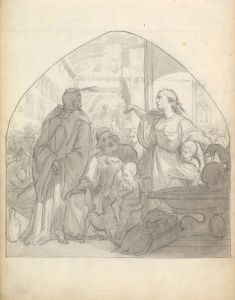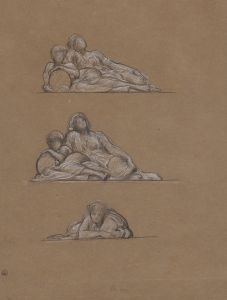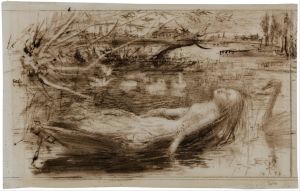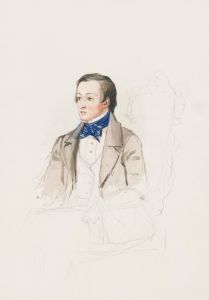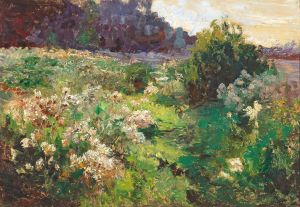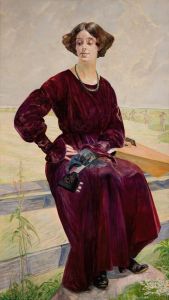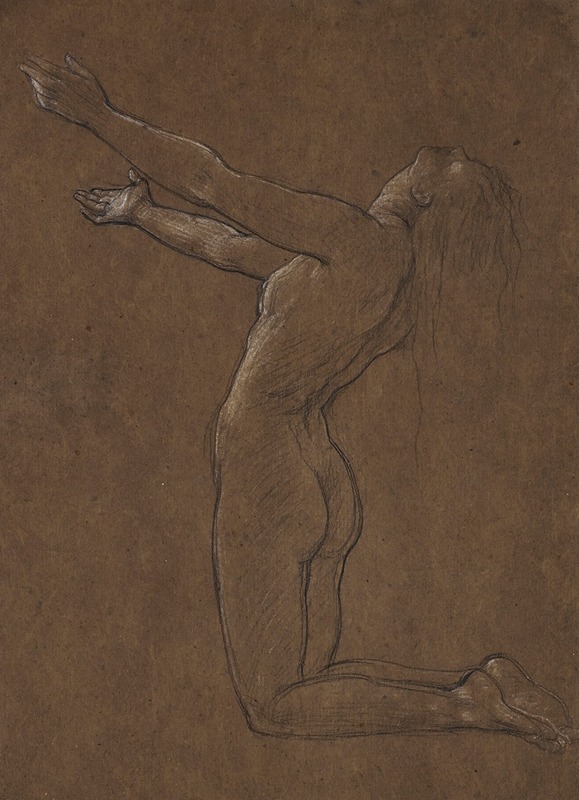
Study For Clytie
A hand-painted replica of Frederic Leighton’s masterpiece Study For Clytie, meticulously crafted by professional artists to capture the true essence of the original. Each piece is created with museum-quality canvas and rare mineral pigments, carefully painted by experienced artists with delicate brushstrokes and rich, layered colors to perfectly recreate the texture of the original artwork. Unlike machine-printed reproductions, this hand-painted version brings the painting to life, infused with the artist’s emotions and skill in every stroke. Whether for personal collection or home decoration, it instantly elevates the artistic atmosphere of any space.
"Study for Clytie" is a painting by the renowned British artist Frederic Leighton, who was a leading figure in the Victorian art world. Frederic Leighton, born on December 3, 1830, and passing on January 25, 1896, was known for his association with the Pre-Raphaelite Brotherhood and his role as President of the Royal Academy of Arts. His works often depicted classical, historical, and biblical subjects, characterized by their meticulous detail and vibrant color.
"Study for Clytie" is a preparatory work for Leighton's larger and more finished painting "Clytie," which was completed in 1895. The study, like the final piece, draws inspiration from classical mythology. Clytie, in Greek mythology, was a water nymph who fell in love with the sun god Helios. Her unrequited love led her to transform into a sunflower, eternally turning her face towards the sun. This mythological background provides a poignant context for Leighton's depiction.
The study showcases Leighton's skill in capturing the human form and his deep understanding of classical themes. It is a testament to his process, revealing the steps he took in developing the final composition. The study likely focuses on the figure of Clytie, emphasizing her pose, anatomy, and expression. Leighton's attention to detail and his ability to convey emotion through the human figure are evident in this preparatory work.
Leighton's "Study for Clytie" is significant not only for its artistic merit but also for its role in the creation of the final painting. Studies like this one were essential to Leighton's method, allowing him to experiment with composition, lighting, and form before committing to the final piece. This practice was common among artists of his time, reflecting a disciplined approach to painting that combined creativity with rigorous preparation.
The final painting "Clytie" is housed in the Leighton House Museum in London, which was the artist's former home and studio. The museum is dedicated to preserving and showcasing Leighton's work, offering visitors a glimpse into the life and art of one of the Victorian era's most prominent painters. "Study for Clytie" may be part of the museum's collection or held in another institution or private collection, contributing to the broader appreciation of Leighton's artistic legacy.
Frederic Leighton's influence on the art world extended beyond his paintings. As President of the Royal Academy of Arts from 1878 until his death, he played a crucial role in shaping the direction of British art during the late 19th century. His commitment to classical ideals and his promotion of artistic excellence left a lasting impact on his contemporaries and future generations of artists.
In summary, "Study for Clytie" by Frederic Leighton is an important preparatory work that highlights the artist's classical influences, meticulous technique, and the mythological themes that pervaded his oeuvre. It serves as a window into Leighton's creative process and his enduring legacy in the world of art.





